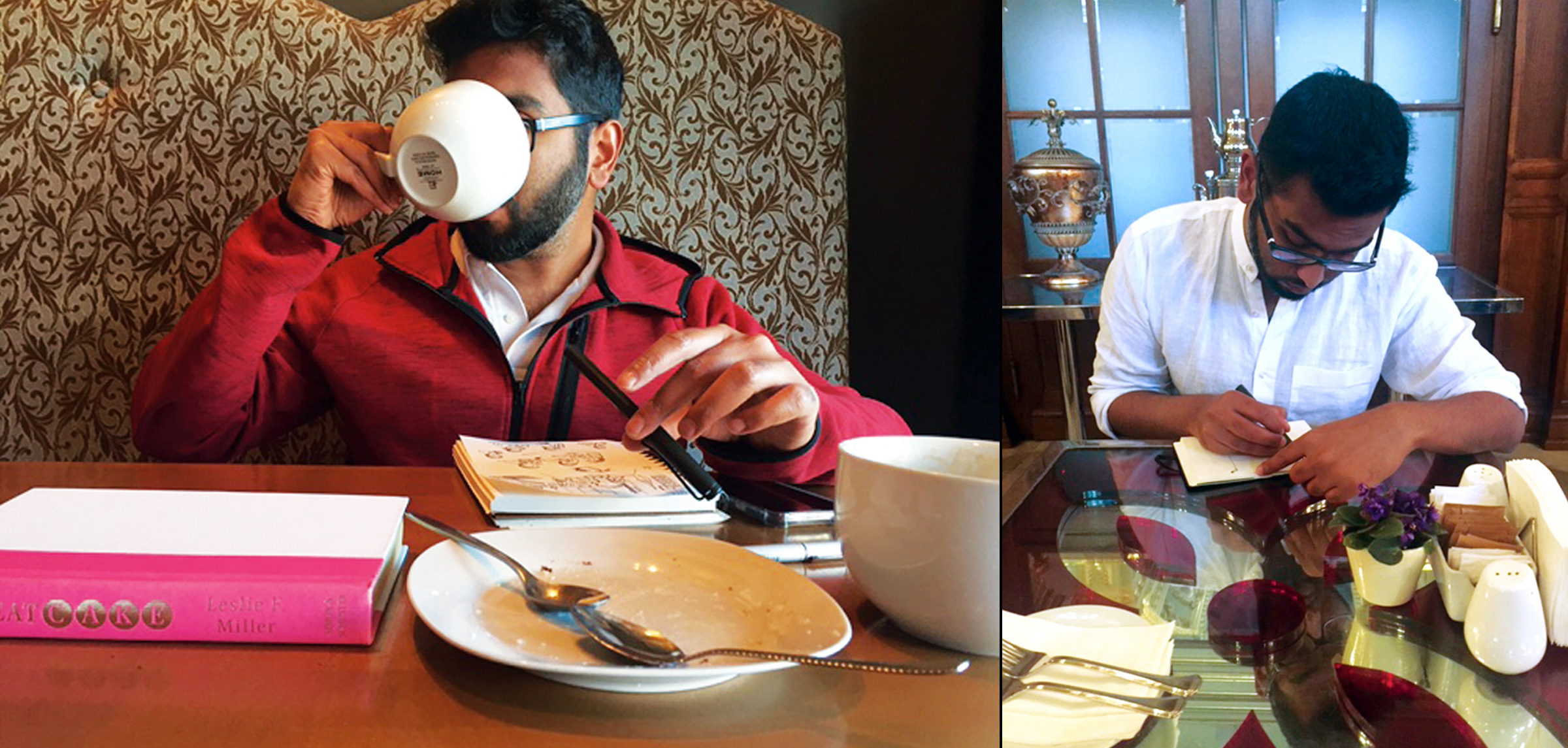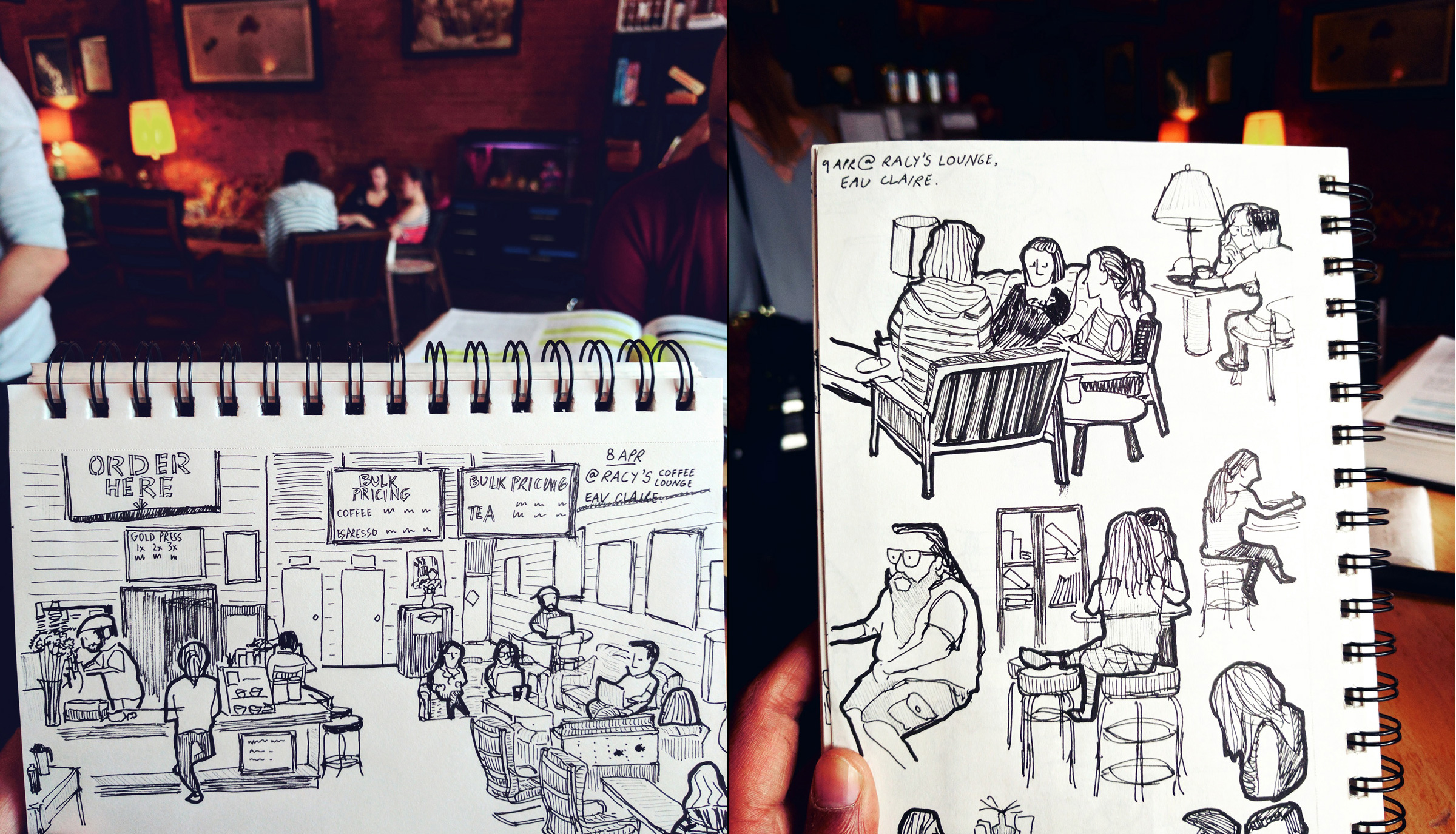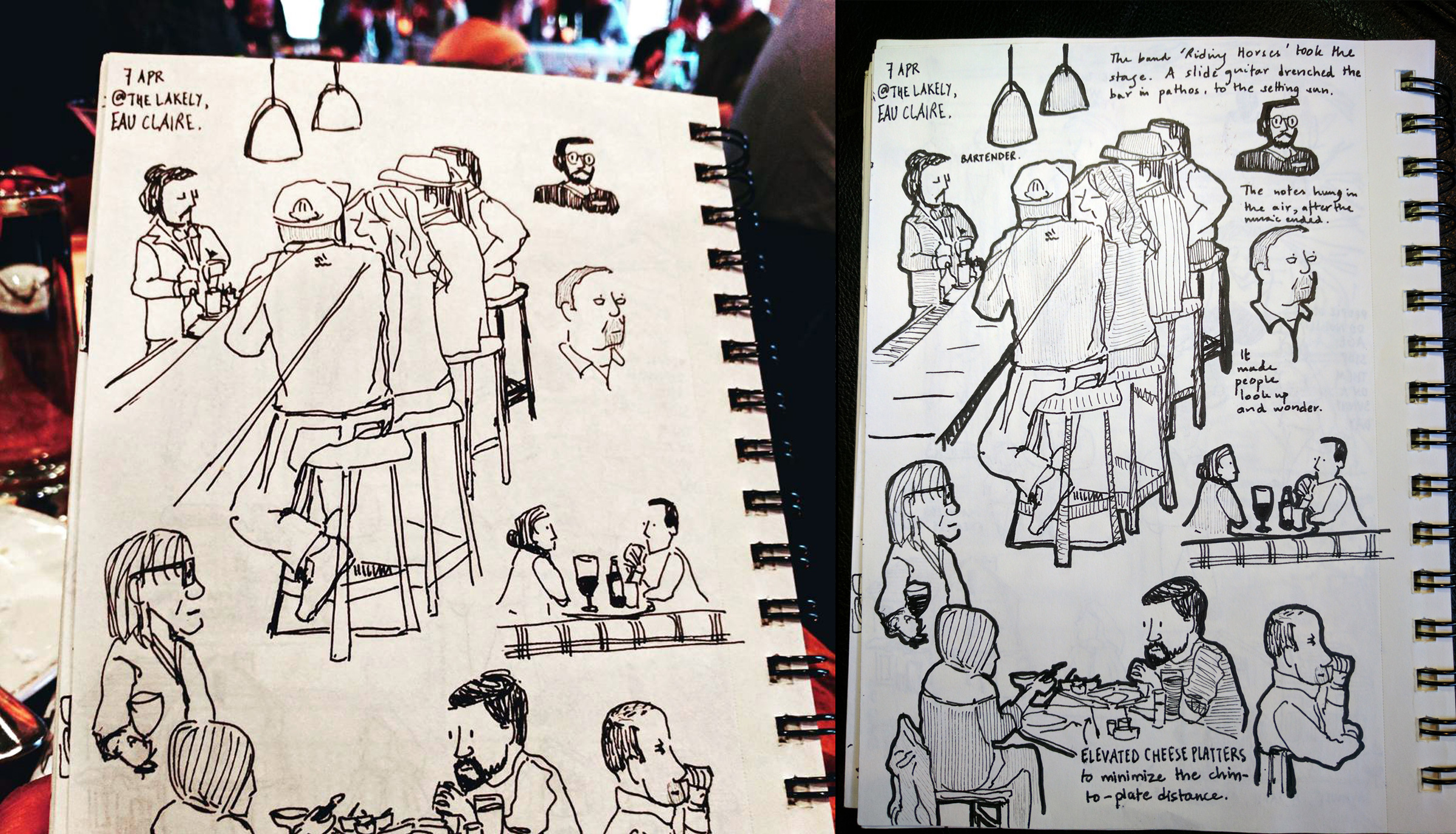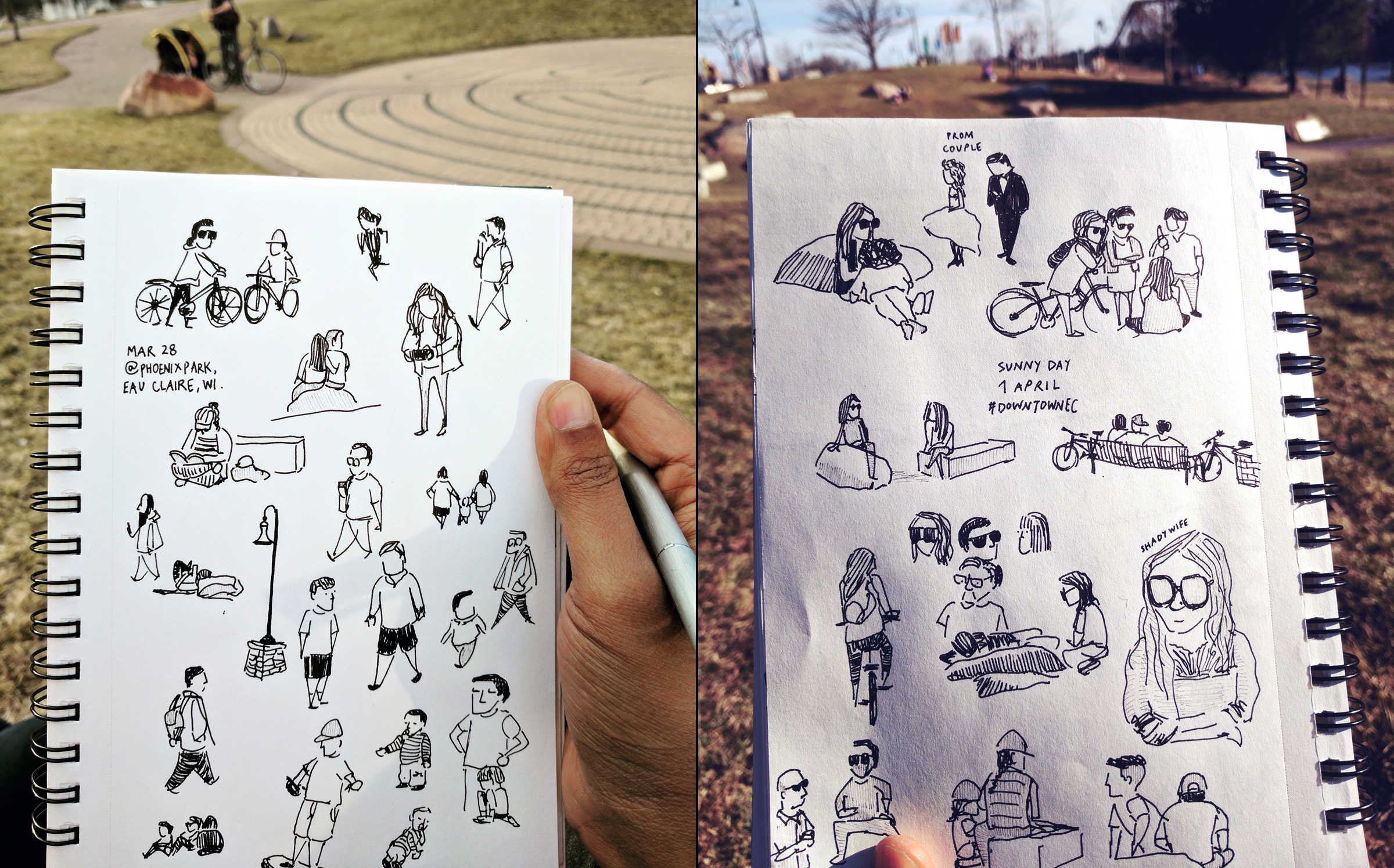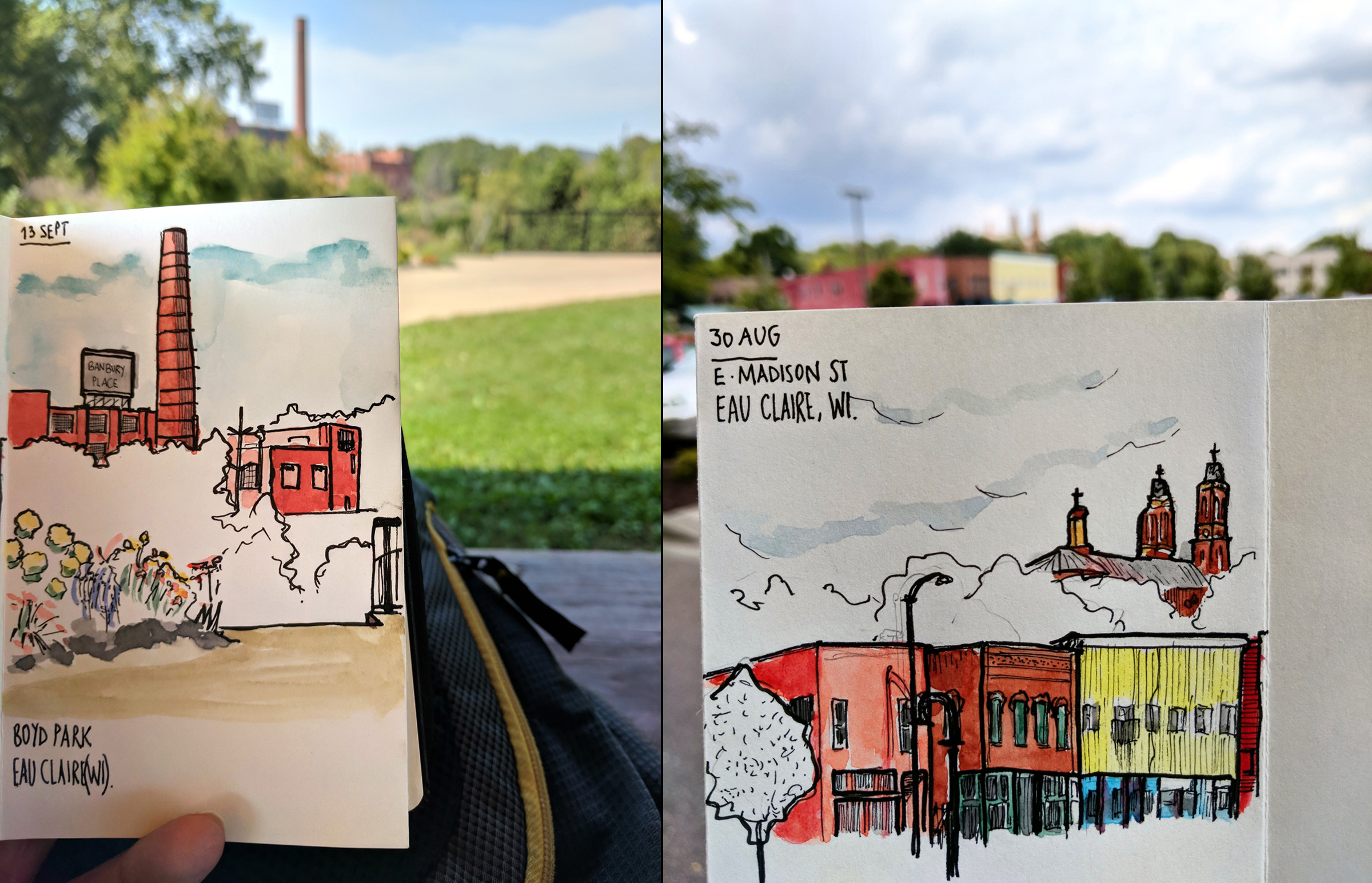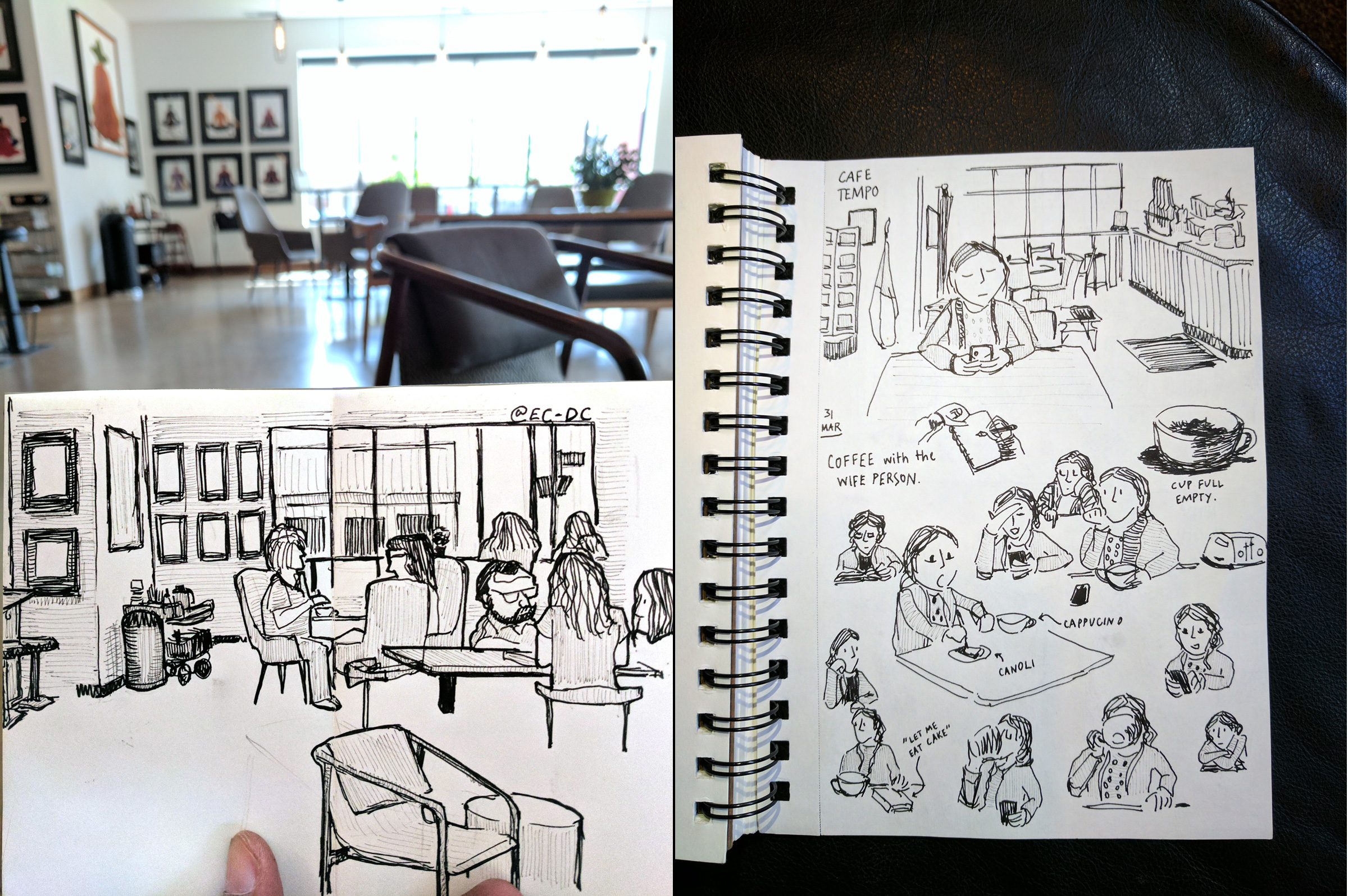
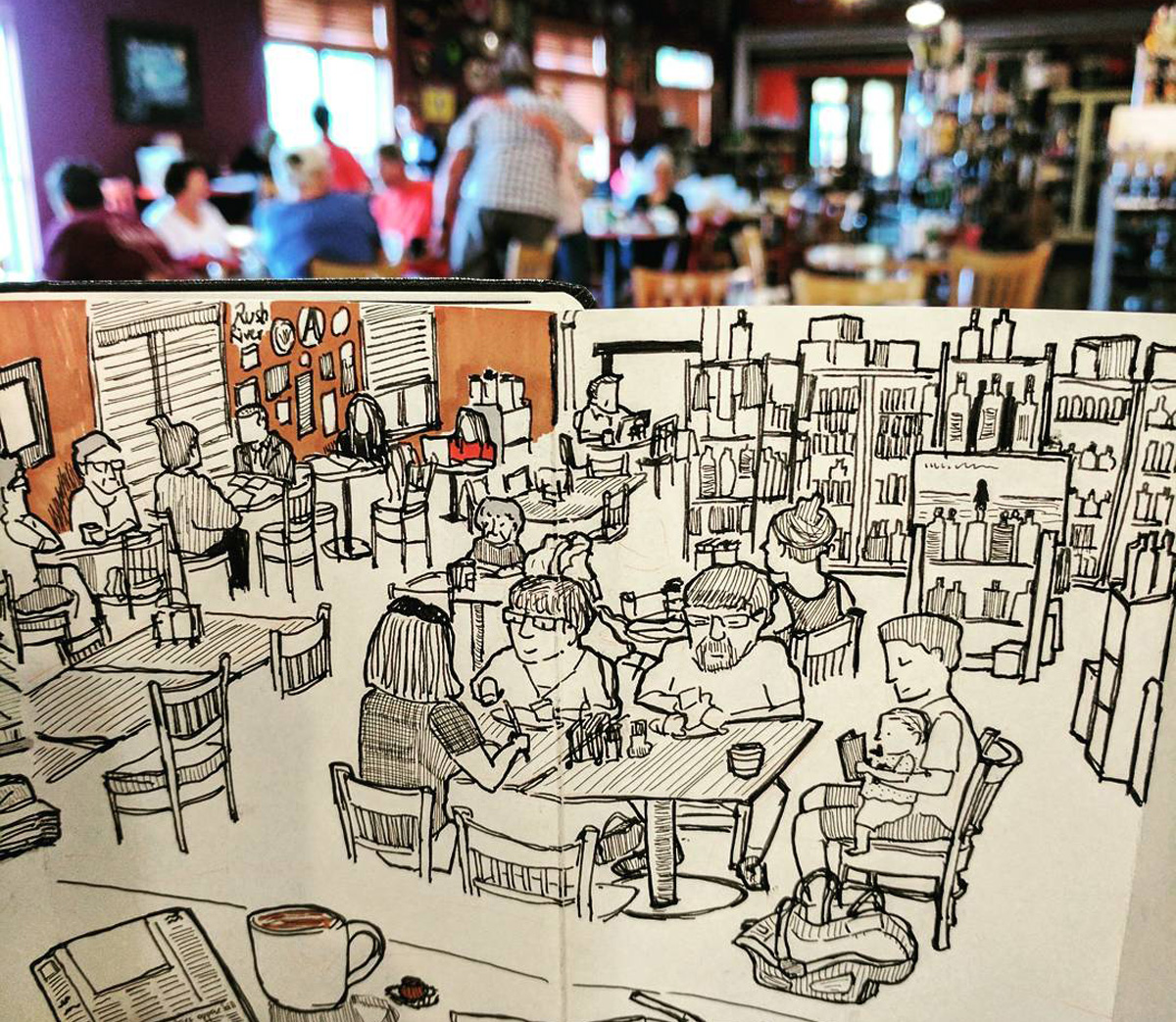
Nishant Jain could’ve been a mechanical engineer or a neuroscientist, but his true passion lies in his artwork. He’s been all over the world: Born, raised, and educated in India, he moved to Europe and got his master’s degree in the Netherlands while his wife Smita Kumar was getting her dentistry degrees in Minnesota, all the while drawing stick-figure comics and sketching interesting scenes in the places he’d visit.
A self-taught sketcher, Nishant eventually realized what he wanted out of life, and it wasn’t being holed up in a lab or stuck behind a research desk. It was being out in the open pushing his creative skills, finding cool places, interesting people, and turning his life experiences into artwork.
Now, after living in Eau Claire for over a year, Nishant’s sketches of different places in the Chippewa Valley make for an interesting look at his first impressions of this place, the people he sees, and the spaces he checks out. Looking over his vast collection of sketches, it seems art is a great way to get to know a place.
We recently caught up with Nishant to talk about his style, his passions, and his myriad books filled to the brim with sketches like warm memories.
V1: So first off, where are you from originally and when did you start drawing?
NJ: I grew up in Kolkata. That’s in eastern India in the state of West Bengal. I grew up there. I went to college in India as well, then I got my masters in mechanical engineering in the Netherlands. I moved to Europe and I was there for about five years.
At the time, my wife was going for her master’s degree in dentistry in Minnesota. And I would keep visiting her.
I started a PhD program in neuroscience, and I was traveling to Chicago a lot for work, so we’d get to meet more often. And actually exactly two years ago, I decided it was enough, and I quit my job, and I moved in with her here in America.
V1: And you were doing some drawing throughout all of this, yeah?
NJ: I was drawing the whole time. I was running a web comic on the side, Rajma Chawal Ink. And I’ve been writing even before I was drawing. I always wanted to draw, but I never thought I was good enough to take the leap … to make it my one thing.
Success is a long, long race, which is something I had to tell my parents. So I want to run the one I’m sure I want to run. I had been doing it on the side for so long, I knew I could do it. So I quit my job, I moved from the Netherlands, my wife got a job in Medford, and we moved to Wisconsin.
V1: Was there a definitive moment you realized you needed to do this more seriously and that this is what you wanted to do with your life?
NJ: The way you learn art growing up in school – the way I learned it at least – it’s a very conventional way of learning how to draw. And I wanted to draw. But I couldn’t draw the way they wanted me to draw.
The other thing I was always good at was making jokes, writing a lot of jokes. I reached a point where just for fun I drew a comic of my friend, just kind of making fun of her. And people liked it, so I drew a few more of some other friends of mine. And those did pretty well too.
This was right at the end of my bachelor’s degree. I was sitting around doing nothing for a couple of months, so I just drew everyday, just making fun of things and stuff I saw. Just expressing humor through stick figures. It was literally just stick figures back then.
I did that for a long time, and when I left my job, I told myself I have to put in as many hours as it needs. So I’ve been drawing everyday since.
V1: You said growing up the way you were taught was to be precise and fit certain mold a little bit. But your sketches are pretty different from that. How would you describe your style?
NJ: For me, it’s not about the detail. I think my style is more about expression. Whenever we look at a scene, we see a lot of things, but the things that stand out to us, the things that catch your eye, those are the things that are important to me.
When I was drawing stick figures, it was already obvious to me that it’s not important what kind of nose a person has – or what kind of nose I draw him with. What really matters to me is things like posture, what kind of dialogue is said, dramatic moments, making those happen.
The mechanics of comics are really interesting to me too. I used to read XKCD which were just these nerdcore comics drawn with stick figures. Just absolute stick figures. Seeing that, it gave me the confidence that you don’t have to draw one way to be a good artist. You can communicate ideas and get those laughs you want – or whatever you want really – through even simpler styles. So I think my style is very minimalist.
How I sketch people is reflective of how I’m teaching myself to draw. I walk around with a fountain pen and since I’m using a pen I can’t take back any steps, I can’t cut anything out, I can’t erase anything. Everything goes down the way it comes. I thought it would be a good way to teach myself if I did it as quickly as I could without letting too much hesitation or second thoughts get in the way of things.
V1: You’ve moved a lot of places too, and you travel around a lot with your sketchbooks. What can you learn about a place by looking at those details and putting them on paper?
NJ: I think I have an edge over photographers. Photographers only get to capture a split second of a scene. I spend up to a half hour looking at the same thing, and I feel I get to know it more intimately than a photographer would.
Today, there were children playing in the park, so I had to really see how feet look in the air when children jump. When you really sit down and focus and study stuff like that, you might suddenly feel like you notice more.
V1: So what do you see in Eau Claire? You’ve been here for over a year now.
NJ: Eau Claire was just a huge surprise. I didn’t expect it to be so beautiful. My American experience is only two years.
In Europe, being able to walk in a city is default. What surprised me is how walk-friendly the downtown area is in Eau Claire. It’s meant for people to walk around and see each other, not just drive by each other in their cars. It’s really great to see how many people have regular conversations with each other. That makes it a more vibrant community. When you allow those things to happen, you allow culture to thrive.
V1: Does it help you appreciate how things look visually in a town? What kind of impression does a city’s visual vibe give you?
NJ: It’s a funny thing, you can look at something and not appreciate it, but if you try to appreciate it, your eyes start noticing all these different things about it that they gloss over otherwise. So if I go to bar in Eau Claire, I’m looking for those unique details, those little eccentricities. What’s the unique flavor, the personal touch? In the end, art comes down to what are the shapes you like to look at. When you draw and you draw and you draw, I start noticing people’s outlines and shapes or when someone’s sitting in an interesting pose. What is beautiful is a very difficult thing to describe. If you render something that’s kind of boring, but you do it in a beautiful way it’s beautiful.
Why do people draw still life? It’s just apples and bananas and stuff, but the act of drawing it is what makes it beautiful. What I draw might look normal, but it’s beautiful to me. And if I do a good job, it might be beautiful to other people too.
--
To see more of Nishant Jain’s sketches and other works, follow him on Instagram at @rajmachawalink.
